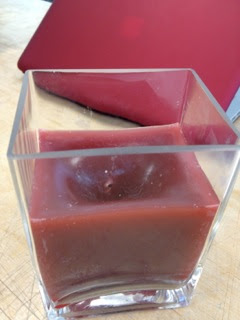Glossary of Restaurants Bakery: a restaurant selling breads and pastries, including such items as muffins, cupcakes, cookies and baguettes. Bar & Grill: a restaurant that serves alcoholic beverages and grilled foods. Barbecue Restaurant: an establishment offering a wide range of barbecued entrees, including pork ribs and briskets. Bistro: an informal eatery serving moderately priced food and drinks, sometimes called a café. Buffet: a self-service restaurant where patrons can pick and choose from an assortment of foods displayed on a special serving table or stall. Some buffets are all-you-can-eat for one flat fee. Café: a term for a casual restaurant, sometimes interchangeable with the word bistro. A café typically serves both hot plates like pastas and pizzas and cold dishes like sandwiches and salads. In some countries, cafes have limited menus and are very similar, if not identical, to coffee houses. Cafeteria: similar to a buffet, a cafeteria has limited table service. Patrons are given trays so they can place whatever food items they find appealing as they travel along an extended counter or display case. Some cafeterias charge a flat fee. However, many cafeterias have different rates for different items. Most cafeterias are found in office buildings and schools. Chuck wagon: formerly referring to a wagon stocked with food and cookware associated with lumber camps and ranches. Today, the term chuck wagon is often used to identify a restaurant known for serving large portions of traditional Western cuisines, from hearty serving of eggs, sausage and grits to a heaping platter of battered shrimp and steaks. Coffee House: an establishment serving a variety of specialty coffee. Many modern coffee houses also sell food, but menus are often limited. Concession Stand: a stall from which patrons can purchase light snacks like chips and ice cream, as well as fully prepared meals like corndogs and hamburgers. Concessions stands are typically found at short-lived or seasonal events like sports games and fairs. Conveyor Belt Sushi: a type of fast food sushi restaurant in which the sushi chef continually places small plates of sushi and other Japanese food items on a conveyor belt. Patrons, seated along the conveyor belt, can grab the plates that appeal to them. Once a patron is finished with his or her meal, the sushi chef uses the stack of empty plates to calculate the cost of the meal. Delicatessen restaurant: an establishment that sell ready made foods like roast beef sandwiches and potato salad. Diner: a restaurant characterized by a narrow structure, originating in the U.S. northeast. The term diner is also used in reference to a type of restaurant that offers a retro décor, casual ambience and a menu filled with traditional American foods like tuna melts and hamburgers. Dinner Theater: a dining experience that combines a staged performance with a meal. The show's cast members often encourage the audience to participate while they dine. Drive-In: in the U.S., patrons visiting this type of restaurant can order their meals and dine while seated inside their vehicles. Many modern drive-in restaurants are modeled after the popular 1950s versions. Some even have roller skating waitresses. Drive-Thru: a fast food restaurant where customers can simply pull up to a window to make and receive their orders without leaving their vehicles. Food Court: A section of a shopping mall, university student center or airport that hosts a collection of food vendors. Food courts typically have self service seating areas with first come, first serve availability. Oyster Bar: a restaurant-bar featuring fresh oysters prepared in numerous ways. Pizza Delivery: An establishment that offers a home delivery service and specializes in pizzas. Pub: an establishment where alcoholic beverages are purchased and consumed. Some pubs are chiefly British, Irish or Australian. Traditional pubs use ingredients purchased from neighborhood markets. Popular pub grub includes shepherd's pie, bangers and mash and fish and chips. Raw Bar: A restaurant serving raw shellfish like oysters and clams. Some raw bars also serve cooked seafood, including such menu items as clam chowders and steamed shellfish. Revolving Restaurant: a restaurant — usually located at the top of a tall building — that slowly rotates, thus offering its patrons a 360 degree, panoramic view. Ristorante: a formal Italian restaurant. Roadhouse: a small accommodation, bar or restaurant located along a road or highway on the outskirts of town. Smoke-Free Restaurant: an eatery that does not have a smoking section. Snack Bar: a food vendor selling light snacks and meals, such as potato chips, bagels and hot dogs. Inexpensive nonalcoholic beverages such as sodas and juices are also sold at snack bars. Soup Kitchen: an eatery, often located in low-income neighborhoods, serving low-priced or free foods for those burdened with financial limitations. Steakhouse: a restaurant serving many types of meat but specializing in beef steaks. Takeout: an establishment that allows patrons to pre-order food for pick up. Tearoom: a restaurant serving light courses and pastries to accompany a wide selection of teas. Popular food items include scones, cucumber sandwiches and crumpets. Teppanyaki: a Japanese restaurant where patrons sit around a counter, which is attached to a large grill. The chef assigned to the grill entertains the patrons while cooking several types of stir-fries. Theme Restaurant: a restaurant with a consistent but out-of-the-ordinary décor. A well known example of a theme restaurant is the Medieval Times, which is designed to resemble a castle from the Middle Ages. Trattoria: an informal restaurant offering Italian cuisine served family style. Truck Stop: a restaurant usually attached to or located near a fueling station. Truck stops are geared toward truckers. They offer a variety of truck services and sell cooked meals, snacks and beverages, as well as souvenirs. | 























